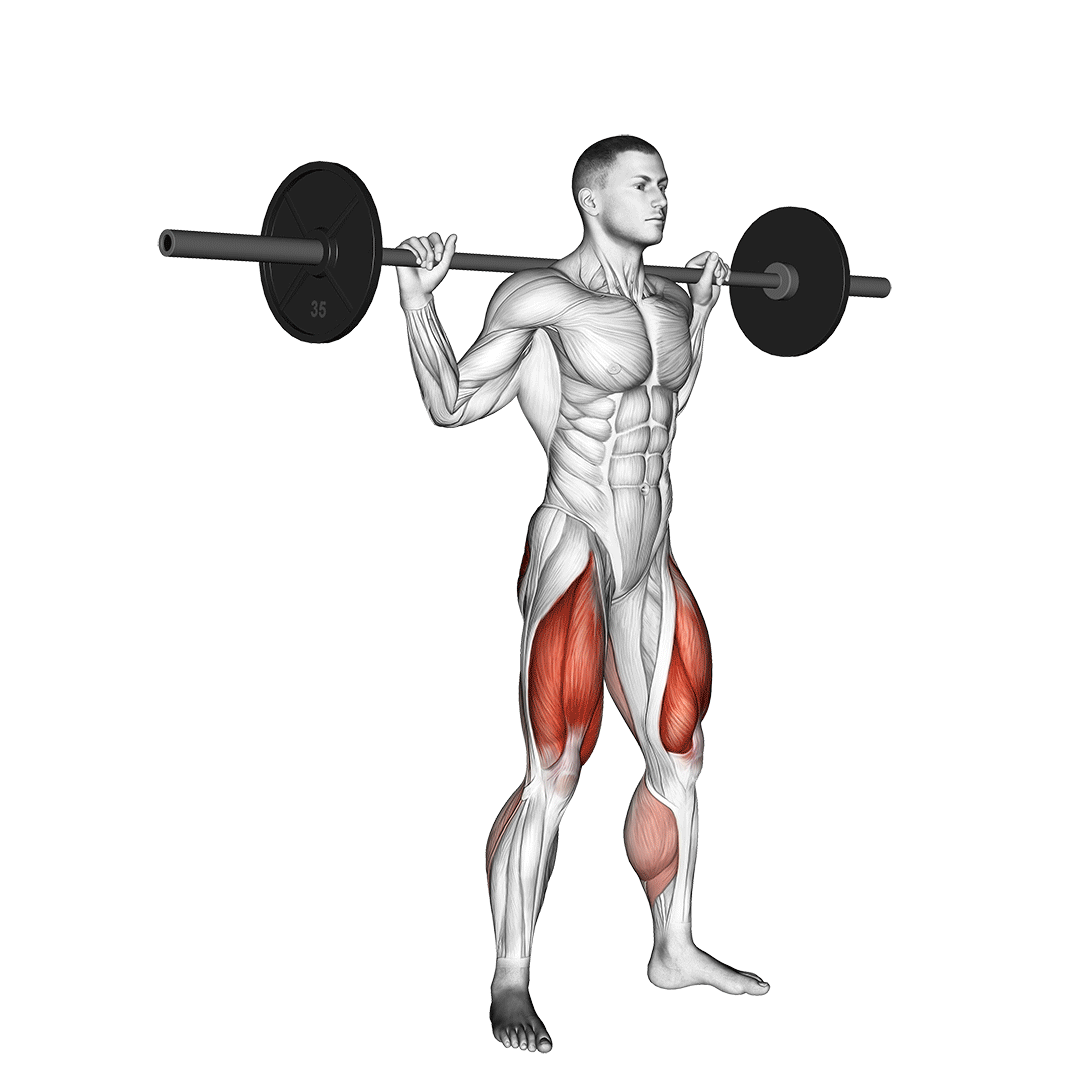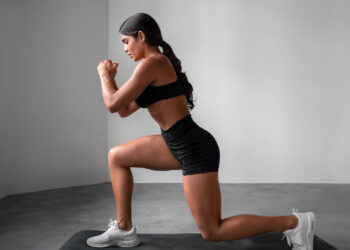The Barbell Jump Squat is a dynamic exercise that targets the glutes while also engaging the quads, hamstrings, and calves for a comprehensive lower body workout. By incorporating explosive movement with traditional squatting, this exercise enhances muscle strength, jumping ability, and glute definition.
To safely perform Barbell Jump Squats, aim for 2-3 sessions per week, ensuring proper rest for muscle recovery. Beginners should start with lighter weights to emphasize form before progressively increasing the load. Maintaining a neutral spine and engaged core is crucial to prevent injury. Ensure the barbell is securely positioned and avoid locking your knees upon landing. If discomfort arises, reduce the weight or practice without the barbell to build strength and technique gradually.
The equipment required includes a standard barbell and adjustable weight plates. For those new to the exercise, bodyweight jump squats serve as an effective modification. With proper technique, frequency, and safety measures in place, Barbell Jump Squats can significantly boost your glute strength and enhance overall lower body power, driving you closer to your fitness goals.
How to Do a Barbell Jump Squat

Begin by standing with your feet shoulder-width apart, holding a barbell across your upper back with an overhand grip. Ensure your core is engaged and your spine is neutral.
- Lower into a squat by bending your knees and pushing your hips back, keeping your chest up and back straight.
- Descend until your thighs are parallel to the ground or slightly lower.
- Explosively push through your heels to jump up, extending your legs fully as you leave the ground.
- Land softly back into the squat position, absorbing the impact with your knees slightly bent.
Inhale as you lower into the squat and exhale explosively as you jump.
Level Up Your Fitness: Join our 💪 strong community in Fitness Volt Newsletter. Get daily inspiration, expert-backed workouts, nutrition tips, the latest in strength sports, and the support you need to reach your goals. Subscribe for free!
Level Up Your Fitness: Join our 💪 strong community in Fitness Volt Newsletter. Get daily inspiration, expert-backed workouts, nutrition tips, the latest in strength sports, and the support you need to reach your goals. Subscribe for free!
Common Mistakes
- Poor Form While Squatting: Rounding the back or leaning too far forward can strain your spine. Keep your chest lifted and back straight throughout the movement.
- Insufficient Depth: Not squatting low enough limits the benefits. Aim to lower your thighs to at least parallel with the ground to fully engage the glutes and quads.
- Jumping Too High: Trying to jump excessively high can lead to improper landing and potential injury. Focus on a controlled jump that maintains proper form.
- Neglecting Landing Technique: Landing with stiff legs increases injury risk. Land softly with knees bent to absorb impact effectively.
- Incorrect Breathing Patterns: Holding your breath can cause fatigue. Inhale when squatting down and exhale explosively as you jump.
Benefits
- Enhances Explosive Power: Improves your ability to generate force quickly, benefiting athletic performance in sports requiring bursts of speed.
- Strengthens the Glutes: Specifically targets the glute muscles, promoting hypertrophy and improving muscle definition.
- Improves Lower Body Strength: Builds strength in quadriceps, hamstrings, and calves, contributing to overall leg strength.
- Boosts Cardiovascular Fitness: The dynamic nature elevates heart rate, aiding in cardiovascular conditioning.
- Enhances Coordination and Balance: Requires coordination and balance due to explosive movements, refining these attributes over time.
Exercise Variations
Alternative Exercises
Safety Precautions
Before attempting barbell jump squats, always ensure that you warm up adequately. A proper warm-up increases blood flow to the muscles, enhances flexibility, and prepares your body for the explosive movements involved. Include dynamic stretches and movements targeting your lower body to prevent injuries.
When performing barbell jump squats, prioritize your form. Maintain a neutral spine and engaged core to avoid excessive strain on your back. If you’re new to this movement, consider starting with bodyweight squats to build strength and confidence before adding the barbell. Additionally, confirm that the barbell is securely positioned across your upper back to prevent any shifting during the exercise.
Consider the surface you’re landing on. Use a stable, non-slip surface to reduce the risk of injury during take-offs and landings. As you progress in strength and skill, pay attention to your body’s feedback—if you experience any discomfort or fatigue, take breaks and adjust your training accordingly. Listen to your body; it’s the best indicator of when to push forward or take a step back in your workout regimen.
Final Thoughts
Incorporating the Barbell Jump Squat into your fitness routine can significantly enhance your lower body strength and explosive power. By following proper form and safety precautions, you can maximize the benefits of this dynamic exercise while minimizing the risk of injury. Start with lighter weights to master the technique, and gradually increase the load as your strength improves. With dedication and consistency, you’ll be well on your way to sculpting strong, powerful glutes and legs.
Interested in measuring your progress? Check out our strength standards for Bodyweight Squat, Squat.








